Ah, butter. Sweet butter. Creamy, delicious, and nutritious, it is perfect for spreading on… your body! Glorious raw pasture butter is not our topic of conversation today, but although I DO love that kind of butter, that will need to be a completely different post for some other time. Using body butters are one of the best way to nourish your skin, from the inside out. For those looking for a really minimalist skincare routine, you can really use just a single body butter (depending on what kind you are using…some lend themselves to be used by themselves while some need to be combined with others butters, oils or other ingredients to be applied easily).
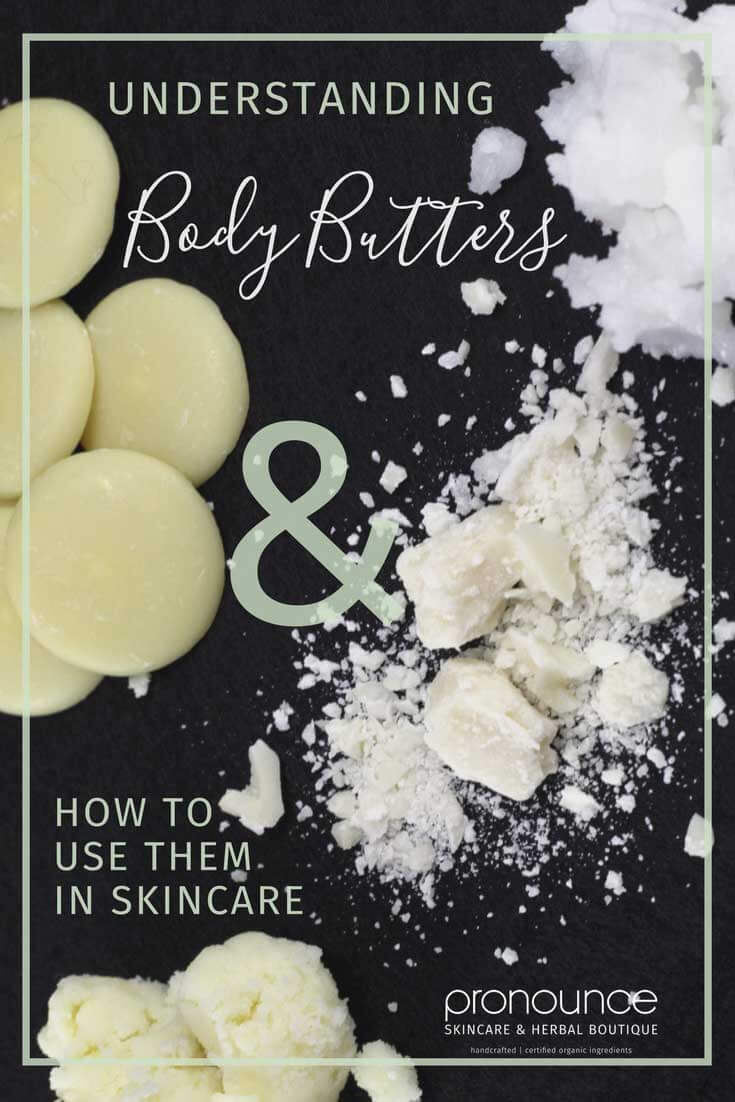
Today we are delving into understanding body butters; Discussing the different kinds, what they do, how they feel, and how to best use them!
Most will require more effort to rub in than a typical skin cream, but it’s totally worth it and since butters don’t contain water they do not dry out your skin, or require preservatives to stop spoilage.
It’s really a win/win situation. Plus they have a myriad of uses: hand, foot and face care, cuticle softening, dry skincare, massage, all over skincare and softening, and even makeup removal.
Different butters will benefit different skin types, and there truly is a body butter, or combination of, to suit pretty much any need.
These delicious butters melt upon contact, are absorbed quickly, and are amazingly hydrating and beneficial to our skin. If you are using butters in cosmetic creations such as lip balms, soaps, creams and hair care you will want to make sure that you know the major players out there; what kind of texture they have, what kind of benefits they have due to their antioxidants, vitamins, fatty acids and even their spf factor.
I have got you covered in my discussions below on the seven major natural butters available. I have split these into two categories: the first being butters that I have on-hand and have used (either singly or in a recipe), and the second being the more exotic butters that I plan to own, use, and love some day!
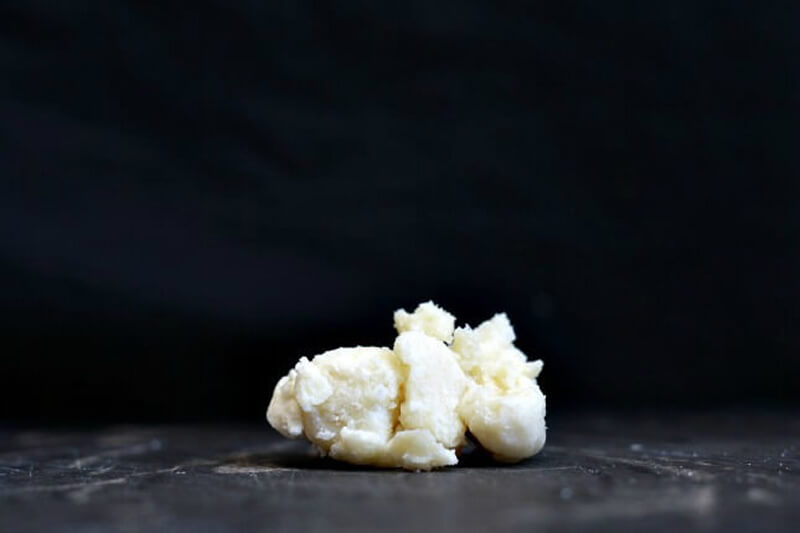
MY ON-HAND BUTTERS
The texture tends to be creamy and yellowish in color and it has a heavenly light chocolate scent (1) and feels delicious on your skin. As always be aware of where you are purchasing from, but a high quality cocoa butter will be suitable for both cosmetic and culinary uses. There will naturally be little pieces of sediment that will appear on the surface once melted. If that is something you do not want in the overall texture of your recipe, you’ll want to strain thoroughly prior to combining with your other ingredients.
I used cocoa butter to help combat my stretch marks from my twin pregnancy (aka A LOT of stretch marks!), and I am going to bet most women equate this butter with stretch mark and scar relief. Do you need more reasons to use cocoa butter? Then read this post on cocoa butter. Shelf life: 2 years
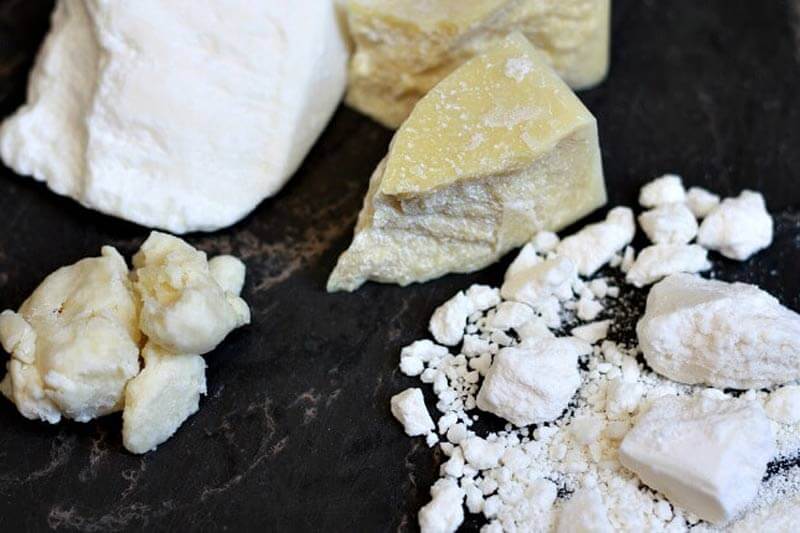
MY WISH-LIST EXOTIC BUTTERS
So there you have it. Details on the different major body butters and what they can do to benefit your skin and hair.
xo,

Not feeling particularly DIYish?
Simply not enough hours in the day? No worries. I have got you covered. Please, head on over to my Pronounce Skincare Shop where I sell all of my skincare creations. I love making them for my family and for you!
-
Shea Butter
$5.00 – $9.00 Read more
-
Cocoa Butter
$6.50 – $16.00 Read more


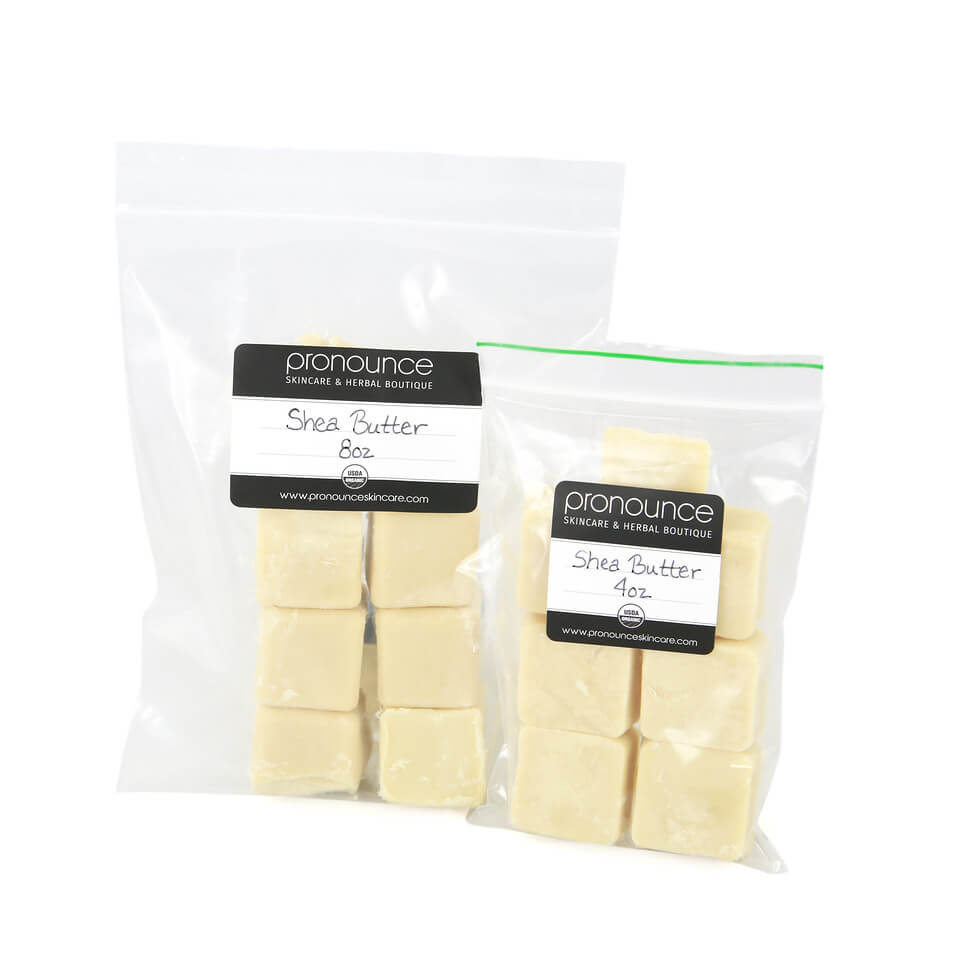
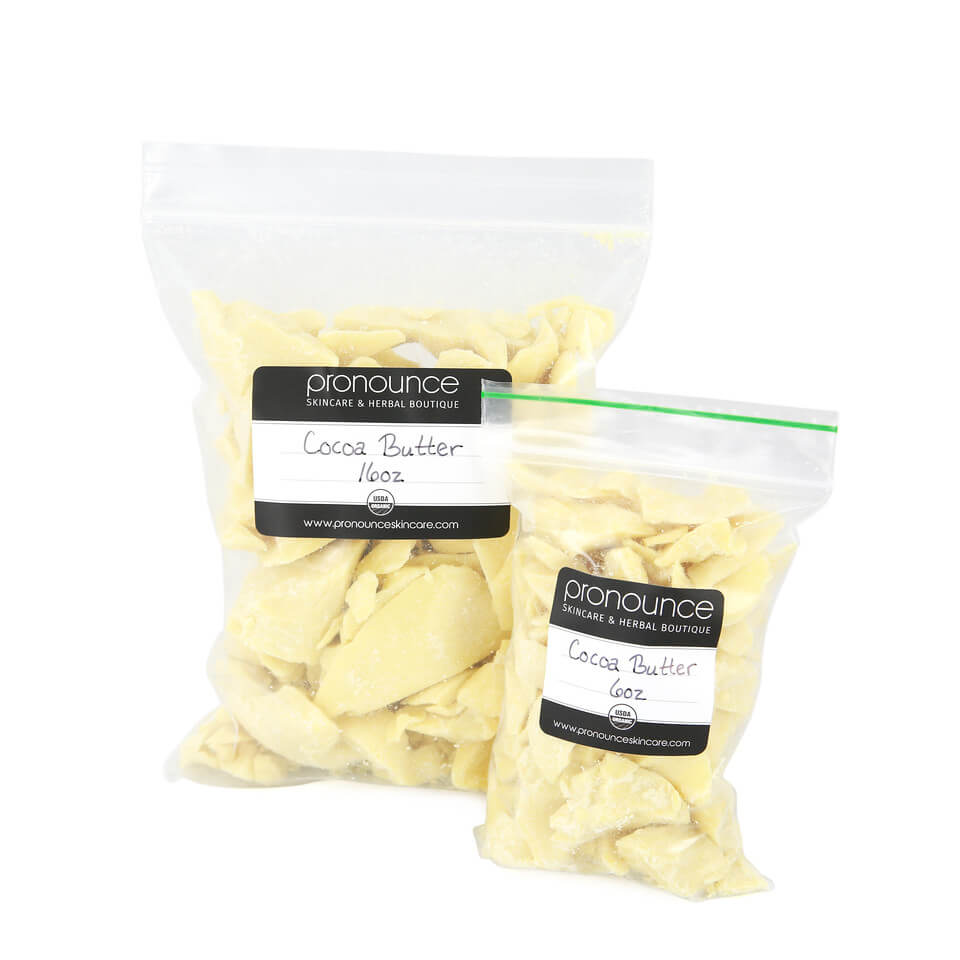
Comments 29
Hi. I’ve just tried 100% Shea butter. I find it stays on top of my skin like Vaseline overnight and doesn’t absorb in. Is this normal for shea?
Hi Fran. Interesting, I don’t find that to be the case. It does take a bit of time to absorb, but it will absorb. Shea butter is the only ingredient? What is the brand. Feel free to head over to email, if you like. jessATpronounceskincareDOTcom 🙂
Hi I hope you reply i need advice on how to measure my ingredients for body butter like how much butter to use and how much oils to use because i am planning on making a big batch for an occasion and just want to make sure i have my measurement of my ingredients right
Hi Alaysia! I have a couple of recipes for body butters that you could follow…
Vanilla Cinnamon Body Butter
Herb-Infused Butter
I hope this helps. Happy DIYing!
What other butters other than mango and kokum can you make lotion bars
Hi Debbie! You could also use shea butter or cocoa butter. Happy DIYing!
Hey thanks for this wonderful article. I had never thought I’d be going back to the natural body butter so much! This product is an incredible, soft, smooth, light and most importantly, hydrating . No aluminium and chemicals are added to this butter.Only Organic shea and coca butter are used. I use it at night on my hands and arms and on my legs . It doesn’t clog pores or cause ingrown hairs and is long lasting! People have asked me why my hands feel so soft, this product is one I’ve had for years, and is a definite love of mine! It also has a nice, soothing scent to it! I will highly recommend the naural body butter. Give it a a try!!
Should you thoroughly wash the skin before applying a second layer of butter to it after 5 hours?
Hi Judy. I don’t think I understand your question. Can you explain further, please?
Thank You for the recipe 🙂 !!
wondering if it is safe to use homemade body butter, that is 3 years old?
Hi Betty~ That is a bit old and some of the oils might have gone rancid. Without knowing the ingredients I can’t say for sure. How does it smell? I wouldn’t be too terribly concerned with mold or anything (so long as it has no water, and if it does I would not use it!), but again…it could smell off if the oils &/or butters have expired. I hope this helps.
It’s best to apply butters after your skin has been moistened like after a shower. The butters than seal the moisture into the skin and prevent further moisture loss.
Right you are! My Pronounce Body Butters are UhMaaaZing right out of the bath or shower. While still a bit damp and with open pores, your skin is in prime condition to soak up all of the organic, buttery goodness.
I love mango butter! I make a whipped body butter with mango (and babassu, grapeseed, and meadowfoam) that my 13yo slathers on every day and is obsessed with! Moisturising but not comedogenic. Wonderful!
I make a mango body butter using mango butter coconut oil and a little bit of vitamin e oil, After imelt it down in my crock pot I allow it to cool till it becomes thick, but not hard and all my essential oils to it and whip it with my hand mixer. It become velvety soft and I use it regularly in both the winter and summer, especially on my feet. I love love love this butter.
I don’t know if your website is still running but I love this tutorial and I would like to share this link with my post about making handmade soaps and lotions. Awesome article
Author
Hi Michelle! Thank you, and yes…you can share this link with your post. 🙂
Thank You for this information. I have combined these butters with great results for a number of skin problems.
I’m new to making my own whipped body butter. I am looking for recommendations for the best carrier oils that will combat/moisturize my dry skin. I have tried coconut oil, sweet almond oil with cocoa butter and coconut oil, jojoba oil and glycerin oil with shea butter and neither one of these whipped body butters truly felt like my skin was moisturized. It felt more like it sat on my skin without providing moisture to my skin.
Thanks!
Author
Hi Tiffany! We have a post that you *must read*! You can learn all about carrier oils in this post. I’ll also suggest organic tamanu oil as a fantastic carrier oil (used in small amounts). Hemp seed oil also penetrates very well and provides a great deal of moisturizing. Hope this helps. 🙂
I love Cupuaçu! It’s an indigenous word meaning “amazon fruit which taste strong”. I’m Brazilian and back home there’s a brand called “natura”, they work with distant communities, sustainable ingredients, biodegradable, all of that. Their catalogues (works like avon) not only show their products but their work with the community. Anyway, they have Cupuaçu body butter and it is crazy good but making your own still the safest choice. And also Cupuaçu fruit taste amazing 🙂
I wondered what would be the best butter to use for crepe paper like skin?
Thanks
This is going to be helpful to me . I hope to make a wonderful skin care butter for myself. Right now I use a mix of lanolin and cocnut oil, but I still feel I need more help with my super dry skin.
I want to use the MOST moisturizing mix on my skin . any further tips would be so appreciated. thank you
Author
Hi Flavia. Thanks for your comment. My own skin tends to be very dry certain times of year and coconut oil just wasn’t cutting it for me. I found that making a whipped body butter in a combination of shea butter (higher amount), coconut oil (lower amount) and essential oil (I used myrrh, which is great for the skin) was a great combo for me personally. Kokum butter is also great for very dry skin, just remember it will need to be combined with other butters / oils to be spreadable and effective. Have fun experimenting and I would love to hear back when you find the perfect combination!
This is so helpful, thank you! I use mango, kokum, and illipe in my homemade deodorant. It’s so easy on delicate skin. It has been my favorite for a couple of years now. I can’t wait to dive into other homemade cosmetics with these tips!
Author
Hi there Stephanie! I love reading comments like this, and it makes me so excited that the tips you read are inspiring you to dive into other homemade cosmetics. And I just love that you use three amazing butters in your homemade deodorant…it sounds divine. You should share your recipe and tips sometime in our Life From Scratch Facebook group! I bet it would benefit many other people. Thanks so much for your comment 🙂